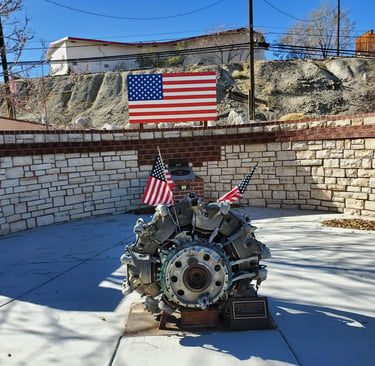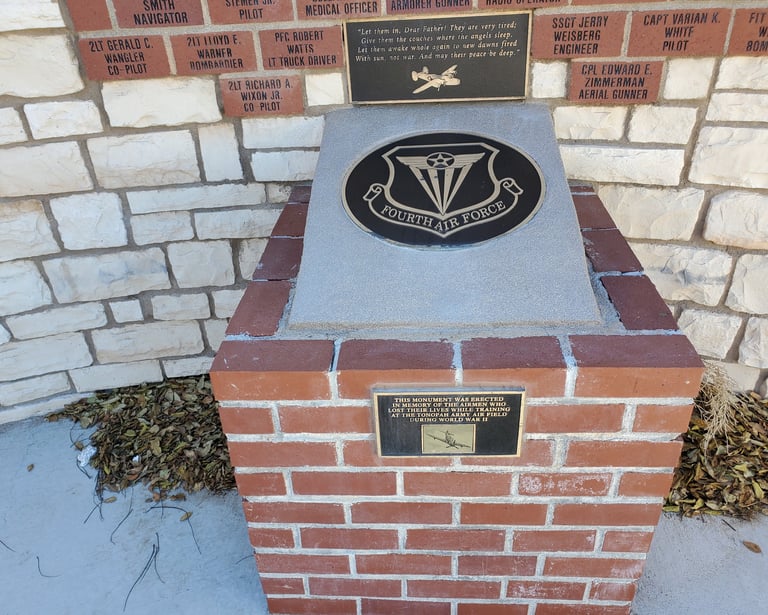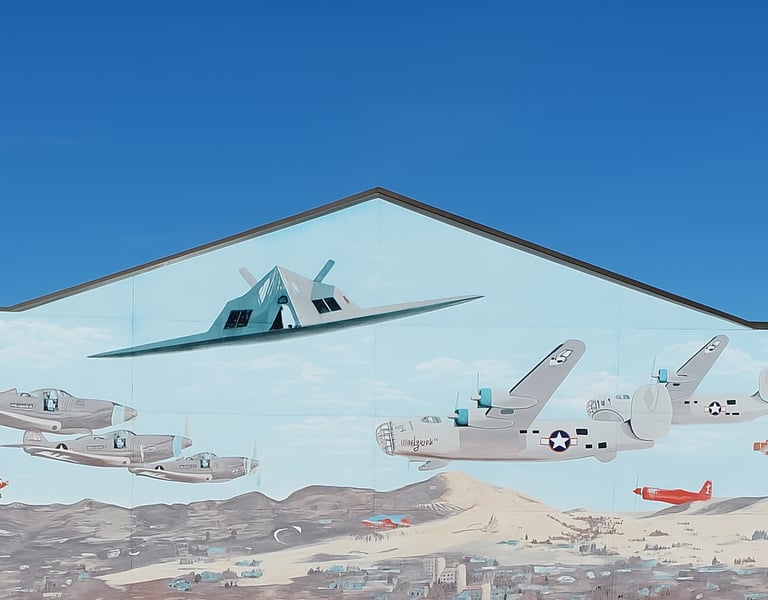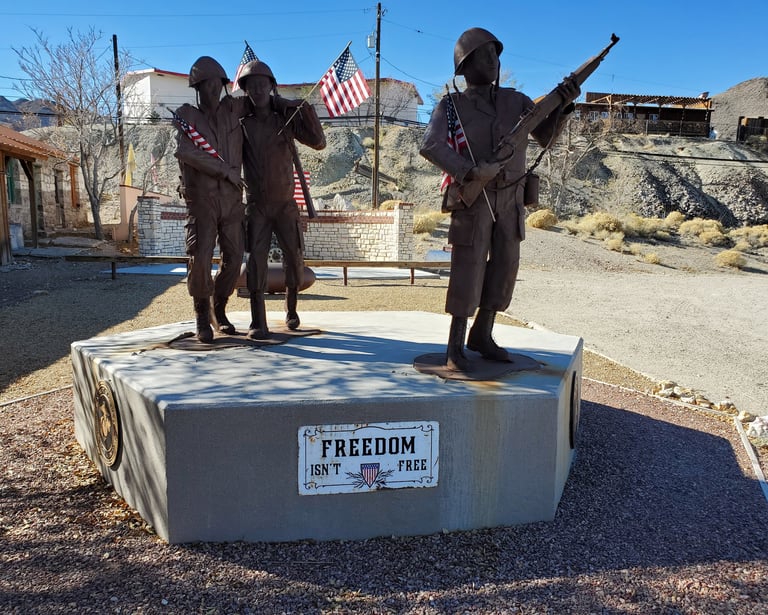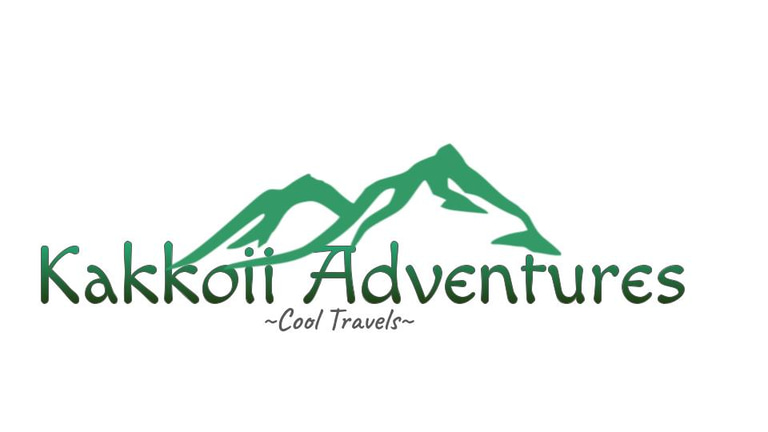What's Stopping You? Change Your Life!
Desert Honor
Tonopah's Quiet Salute
WILLIAM
11/11/20254 min read
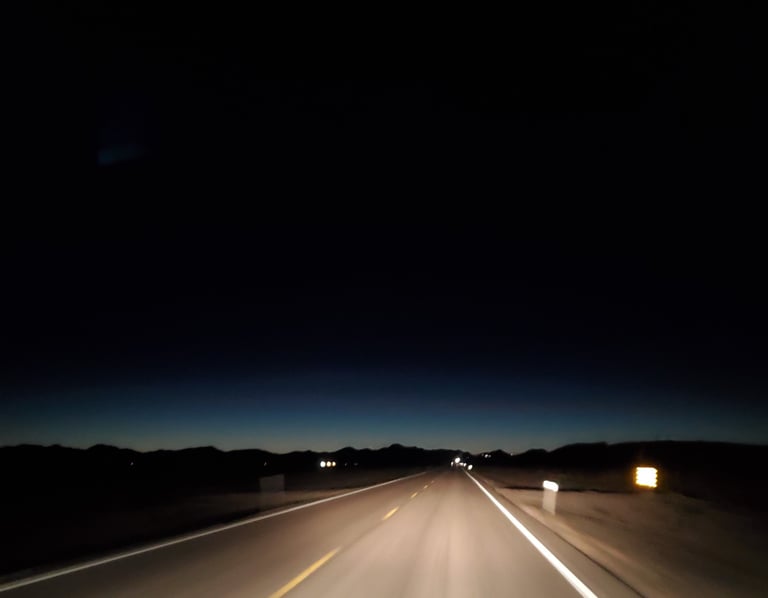

We’re returning to California — not permanently. Mary has a Kuk Sool test coming up, and next week we’ll be bound for Nihon by way of Hawaiian Air out of Sacramento. It breaks up the flight time. For now, our compass points west.
For the past week, we’ve been trudging across the American Southwest, trying to reach Sacramento ahead of a storm. After crossing the flatlands of Oklahoma, Texas, and most of New Mexico, we climbed into the pine-scented foothills of Flagstaff and Williams, Arizona. Outside Kingman, the interstate lost its charm, so we shifted gears and took the two-lane Highway 93.
There, the landscape changed again. We left the Mojave behind and entered the Sonoran Desert, cutting through the Great Basin — a region once covered by a shallow sea. Its ancient waves laid down layers of lime and silt that hardened into the limestone and shale still visible along the slopes.
Millions of years ago, pressure from the west folded and lifted the seafloor into mountains. Later, the land stretched and broke between them, repeating the pattern until the Basin and Range Province was born. From the air, it looks like ripples frozen in motion — ridge, valley, ridge, valley — all running north to south, as if the planet itself were exhaling.
It’s a hypnotic landscape — the kind of beauty that must be experienced. Everyone should see the Basin at least once.
We pressed deeper into it, racing along Nevada State Route 375 — the Extraterrestrial Highway — bound for Alamo, Rachel, and finally Tonopah. That last stop remains my favorite desert town for a host of reasons (looking at you, Clown Motel and Call of Duty).
We woke the next morning at the Best Western in Tonopah — a comfortable, older place in the middle of town. We’d arrived late, checked in, and gone straight to bed.
Almost directly across Main Street stand the local VFW and Veterans Monument. Several displays honor both Tonopah’s veterans and those who served elsewhere — traditional statues, name plaques, even an engine from a wrecked B-24 lost during training at the local air base.
The names carved in stone belong to the town’s sons and uncles — miners turned mechanics, young men who looked up from the sagebrush and saw the wide promise of the sky. It’s as if each name were etched into the town’s own heart.
The monument bears an inscription:
“Duty, Honor, Country. In honor and memory of all veterans who served during times of war and peace.”
Commissioned only in 2020, it already feels timeless. I’ve visited Tonopah many times over the past 25 years, and it’s hard to imagine the town without it.
Visitors might stumble upon it expecting just another small-town memorial. But if you linger, you start to see how much of Tonopah’s identity is bound to service. Across the street, murals honor miners and pioneers — the men and women who built the place before there were even roads. Veterans gather here and at the VFW.
The locals are protective of their monument. While we were there, an older gentleman emerged from a nearby trailer to walk his dog but seemed more interested in what we were doing. Only after watching us photograph the park did he seem satisfied and move on.
The town’s pride is unmistakably earned.
After taking dozens of photos, we crossed the street to capture a large mural painted on the side of a building. We’d hoped to find someone to ask about it, but it was still early, and the streets were quiet.
The mural raised more questions than it answered. Obscure details in art are rarely random — though the artist might not always know why they include them. Artists often embed subtle symbols or references that reward close viewers: a gesture, a shadow, a background shape. Painted on the fuselage of a WWII fighter in the mural is a death’s head with a scythe. Given the setting, such a small detail must have some bearing on Tonopah’s story. We’d find the answer before day’s end.
Tonopah’s reverence is built into the rhythm of the community — the kind that doesn’t need ceremony to matter. You see it in the way the memorial is tended, in the flowers that appear without fanfare, in the quiet nods of locals who pass it daily. Tonopah teaches endurance, and as a town and a people, it’s learned that lesson well.
Tonopah’s memorial isn’t just about war or history. It’s about a quiet, enduring gratitude.
If You Go
Getting there: Tonopah sits roughly halfway between Las Vegas and Reno on U.S. Highway 95. From the south, take Highway 93 north through Alamo and Rachel to connect with U.S. 6 into town — the scenic route through the Great Basin.
Where to stay: The Best Western on Main Street offers reliable comfort and a view of the Veterans Monument across the road. For a quirkier stay, the Clown Motel remains Tonopah’s most photographed landmark — equal parts eerie and endearing.
What to see: Visit the Central Nevada Museum for context on the region’s mining and military history, and don’t miss the Veterans Memorial Park downtown. The murals nearby reward a slow walk and a careful eye.
When to visit: Spring and fall offer mild weather and wide skies. In winter, snow dusts the surrounding ranges; in summer, the desert glows with heat and silence.

